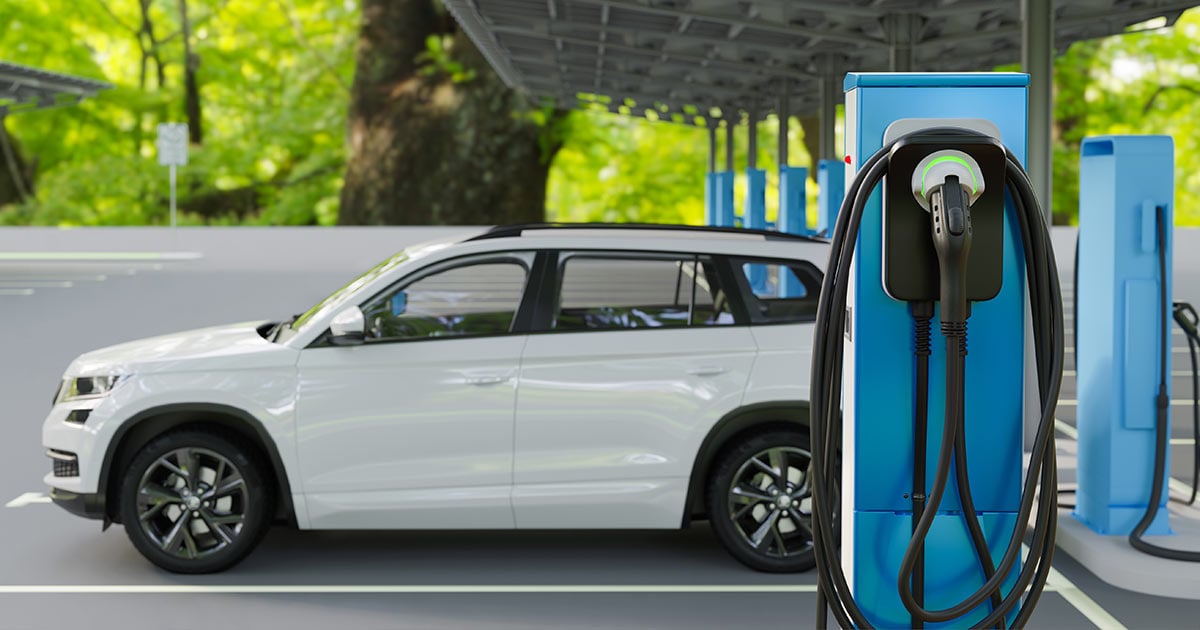How to Test Prismatic Cell Batteries for Electric Vehicles

The pursuit of lighter, longer-lasting, faster-charging electric vehicle (EV) batteries is ongoing. In recent months, some manufacturers have shifted their focus from cylindrical cell batteries to prismatic cells to power their EV models. Now, they face the challenge of proving these batteries will perform better and last longer for customers.
Before they hit the market, EV batteries must be tested rigorously. Just as vehicle manufacturers invest in research and development to push innovation, so do those in the test chamber industry. Associated Environmental Systems has developed high-amperage fixtures for battery test chambers. These chambers enable testing up to 1000 amps per channel, ideal for charging and discharging prismatic batteries in a controlled environment.
Here’s what you need to know about testing prismatic cell batteries for EVs.
What Are Prismatic Cells?
Lithium-ion batteries are designed for non-stationary environments, prismatic cells are typically stored in welded aluminum casings, and sometimes harder plastics, as well. They consist of layered anodes (negative or reducing electrodes), cathodes (positive or oxidizing electrodes), and separators placed inside cubic-shaped moldings.
Prismatic cells are designed to be smaller and have the ability to be stacked together, enabling better use of testing space. This is especially important when larger batteries are needed to power EVs. Their square or rectangle profile facilitates optimal use in EVs, as well as smartphones and other handheld electronic devices.
To determine performance levels and verify prismatic cell batteries are safe before going to market, they must be tested thoroughly.
High-Amperage Testing for EV Batteries
Almost every industry relies on environmental test chambers in some capacity. The EV market is especially unique, companies need to account for several variables before introducing their products to consumers, from the lifespan of the batteries to natural conditions the vehicles will encounter.
For instance, testing a new line of vehicles (and the batteries that power them) might include a simulation that imitates an EV driving from snow-covered highways in the Sierra Nevadas to a hotter, drier terrain resembling the Great Basin Desert.
Testing may cover extreme changes in temperatures, corrosion from the elements, and severe stress.
Having high-performance environmental test chambers are crucial for each extreme, but arguably more so for testing the batteries themselves. You must have battery testing capabilities to accommodate higher amperage rates of the newest batteries, specifically lithium-ion-phosphate (LFP) prismatic cells.
LFPs have grown in popularity because of their lightweight, diminished threat of thermal events, and cost-effectiveness. This makes them trailblazers in overcoming range anxiety surrounding EVs, the fear of being stranded between charge stations.
These advancements are made possible by utilizing AES’s ATPHEAVY fixture, which can accommodate high-amperage testing up to 1000 amps per channel.
ATPHEAVY fixtures inserted into an AES battery test chamber feature the following:
- Heavy-duty shelving that can hold up to 500 pounds.
- A single control panel, where you can synchronously operate the test chamber and battery cycler while collecting correlated temperature and cycling data in one location.
- Multiple safety features are available to meet your test severity, including nitrogen purge, inert gas pressure vent, ventilation blower, and more.
- AESONE CONNECT facilitates remote testing and monitoring, giving your engineers the ability to collect data in real-time and operate your chamber from anywhere in the world.
ATPHEAVY battery fixtures are compatible with the Super 508, the world’s most powerful benchtop test chamber.
Drive innovation and ensure your prismatic batteries are safe for the open road by contacting AES today to design and manufacture the right battery test chamber for your industry.
Associated Environmental Systems is an industry leader in battery testing with more than 60 years of experience building, designing, and maintaining environmental test chambers.


